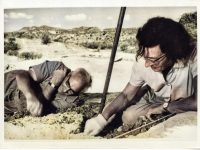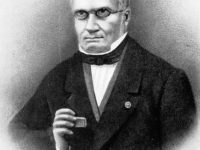Charles Walcott and the Cambrian Explosion
On August 30, 1909, American paleontologist Charles Doolittle Walcott discovered the Burgess Shale Formation, located in the Canadian Rockies of British Columbia. With its Cambrian fossils the Burgess Shale is one of the world’s most celebrated fossil fields. Walcott excavated repeatedly to collect more than 65,000 specimens from what is now known as the Walcott Quarry, named after him. “Nature has a habit of placing some of her most attractive treasures in places…
Read more







